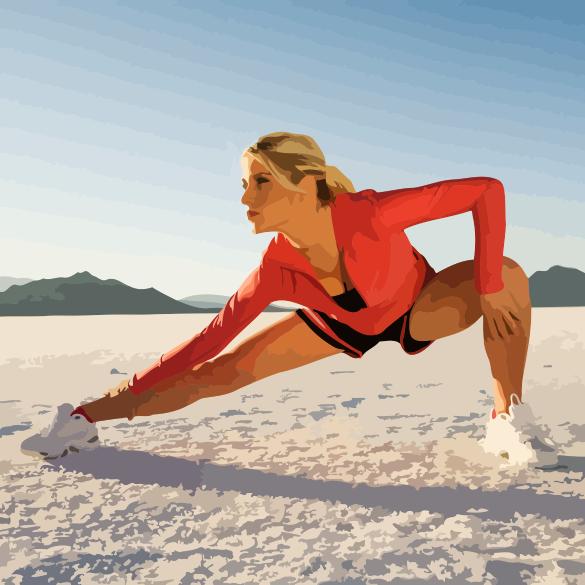Warming Up and Cooling Down Before and After Exercising

Despite all the experts telling us that we should warm-up and stretch before a workout, there is no scientific evidence that this helps in any way. For example, no one has ever proven that a warm-up helps prevent injury, or helps prevent sore muscles. All these years it has just been assumed. While it may seem common sense to warm-up and cool-down, don't be surprised if eventually someone proves that there is absolutely no purpose to these two activities.
Has anyone ever told you that stretching after a workout will help prevent sore muscles? Especially the soreness you get the next day or two if you do a new activity? Well, there is also no scientific evidence that this helps at all. In fact, the reason for sore muscles is really not known, there are just a few theories floating around, but they are just theories.
There is some evidence to suggest that stretching before an activity may actually be detrimental to performance. This is for activities which require a ‘spring' or a ‘snap' to the movement e.g. pole vaulting or long jump. The thought is that stretching a muscle will ‘turn-off' the parts of the muscle that cause it to contract quickly, therefore making it less effective during the activity.
And one last item on stretching… Simple stretches do not improve flexibility. Flexibility is a workout in itself, and should be done by holding stretches for at least 60-90 seconds each time.
While little scientific evidence exists to support the benefits of warming-up and cooling-down the anecdotal evidence remains strong that I recommend you do both. The next two sections explain how to do things right.
How To Warm-Up
The concept of the warm-up is that it gets the body ready for a particular activity. The premise behind the warm-up is multi-fold; to increase heart rate, increase blood flow to the muscles, decrease blood flow to areas that will not be involved in the activity (this happens automatically as the areas to be worked go through vaso-dilation), increase body temperature, and increase blood flow to the joints.
- Warm-up by moving, not by stretching. Stretching while your body is cold increases the chance of injury.
- Fast walking or light jogging is the best way to warm-up.
- Stretch only after you have worked up a light sweat from warming up.
- Sitting in a sauna before your workout is also a good way to warm-up.
- If you are cold, e.g. because you were outside in cold weather, your warm-up should be a few minutes longer.
- Near the end of your warm-up, the movements should be sport specific. For example, if you are going to run, warm-up your leg muscles just before you start running.
- If your activity involves ballistic movements such as bouncing or jumping, then the end of your warm-up should also include these movements.
- If something hurts, don't do it.
How to Cool Down
The purpose of the cool-down is to slow bring the body from high activity to low activity; to allow the heart rate and blood flow to slowly decrease, rather than all at once by sitting down right after a hard run.
- Slow down gradually. For example, from a fast run to a slower run, then to a fast walk, then to a slow walk, then to some stretches.
- Spend some time stretching.
- As you go through your cool-down, pay attention to your body and note any soreness, especially in joints, which might indicate an injury.
- Replenish with some fluids, but do it slowly.



Leave a Reply